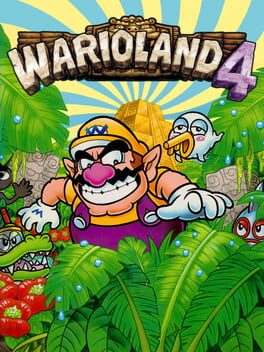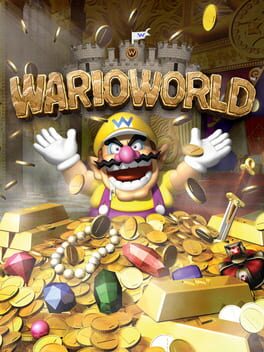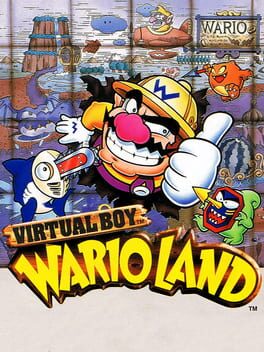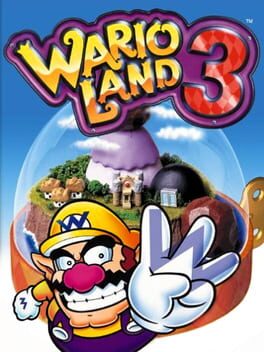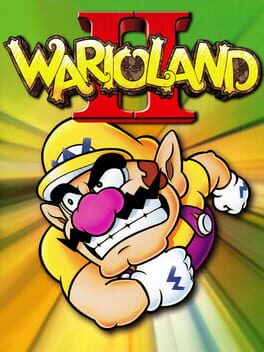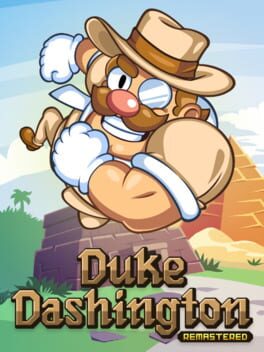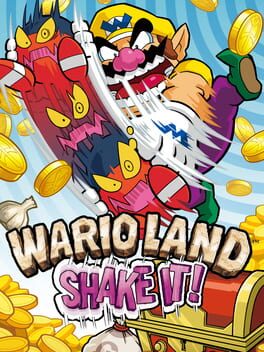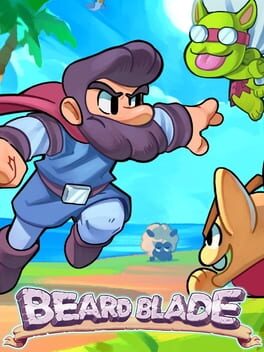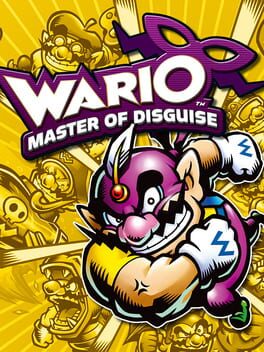Wario Lands
Ranked: Wario Land titles, including spinoffs, spiritual successors, and other titles which draw significant influence from the series.
There are no explicit criteria for any game to be considered for this list, and all games besides the official mainline Wario Land titles are constituent only by opinion. This list will be updated as more games are released.
Notes may contain spoilers.
There are no explicit criteria for any game to be considered for this list, and all games besides the official mainline Wario Land titles are constituent only by opinion. This list will be updated as more games are released.
Notes may contain spoilers.
13 Games
An amazing successor to the Wario Land series, and an amazing game in its own right. As well as cues taken from Earthworm Jim and Jazz Jackrabbit, Sonic the Hedgehog-like speed in conjunction with basic mechanics borrowed from Wario Land 4 and revamped to their absolute limits makes for dopamine-overloaded speedrun-style platforming, accentuated by deliberately-linear level design and a combo system which rewards players for violent and efficient play.
1
Often held as the crown jewel of the Wario Land series of games, and not without cause; the game reincorporates several of the strongest elements from all previous entries in the series while recontextualizing many of their weaker or more mundane elements and polishing general mechanics to a mirror sheen.
2
Wario & Treasure are a match made in heaven for more reasons than one. A few overly-simple boss fights and one particularly poorly-designed level, "Shivering Mountains," are the game's only significant missteps.
3
As with Shovel Knight and all its other expansions, King of Cards draws inspiration from so many sources that it can be difficult to determine the historical roots of any given mechanic; flavors of Super Mario Land 2 and Super Mario Bros. 3, Castlevania and Symphony of the Night, Mega Man, and other classics are present all throughout, but if any Shovel Knight game can be compared to Wario Land, it is King of Cards.
The main method of attack available to the player is a shoulder bash, which upon striking an enemy or certain walls, transitions into a pirouette which functions as a ground pound. Many thematic and visual elements from Wario Land titles are also borrowed or referenced, especially the character of King Knight himself, who is bulky, greedy, and selfish. The game's final boss is very overtly based upon Wario Land 3's final boss, as well.
The game's controls are tight and the mechanics are honed to a razor-edge. Platforming is addictively fun, as are enemy encounters, and boss fights, which are mostly recycled from Shovel Knight though retooled with care in order to suit King Knight's own playstyle. Furthermore, the included card game, Joustus, is fun and at times punishingly difficult, however easy to bypass for any player uninterested in what amounts to a minigame in an action/precision platformer.
The main method of attack available to the player is a shoulder bash, which upon striking an enemy or certain walls, transitions into a pirouette which functions as a ground pound. Many thematic and visual elements from Wario Land titles are also borrowed or referenced, especially the character of King Knight himself, who is bulky, greedy, and selfish. The game's final boss is very overtly based upon Wario Land 3's final boss, as well.
The game's controls are tight and the mechanics are honed to a razor-edge. Platforming is addictively fun, as are enemy encounters, and boss fights, which are mostly recycled from Shovel Knight though retooled with care in order to suit King Knight's own playstyle. Furthermore, the included card game, Joustus, is fun and at times punishingly difficult, however easy to bypass for any player uninterested in what amounts to a minigame in an action/precision platformer.
4
The jack-of-all-trades among the Wario Land series of games. Wario's basic mechanics are borrowed directly from Wario Land 1 and thoroughly polished.
The game's short length is made up for in its replayability.
The game's short length is made up for in its replayability.
5
Deceptively clunky and stiff, a fun and extraordinarily charming game which cannot maintain a pace.
Level design begins strong, creative, and thoroughly interesting, and becomes increasingly generic as the game progresses. Bosses initially appear overly-similar and uninteresting but each allow for a variety of fun interactions.
Level design begins strong, creative, and thoroughly interesting, and becomes increasingly generic as the game progresses. Bosses initially appear overly-similar and uninteresting but each allow for a variety of fun interactions.
6
A fun, if flawed, game.
Iterating on Wario Land 1's mechanic of altering stages that have already been completed, the overworld is charming and the levels are fun to navigate. However, platforming is at times very tedious, and boss fights are generally unfair exercises of trial-and-error.
Iterating on Wario Land 1's mechanic of altering stages that have already been completed, the overworld is charming and the levels are fun to navigate. However, platforming is at times very tedious, and boss fights are generally unfair exercises of trial-and-error.
7
A quaint game held back by its own level design, which asks the player to platform through the same area several times in order to gather all collectables. Boss fights are also unenjoyably difficult.
That said, the game's story being made up of branching timelines is novel, and moving Wario feels perfect.
That said, the game's story being made up of branching timelines is novel, and moving Wario feels perfect.
8
A very cute hack for diehard Wario-lovers.
Wario Land 4's levels are experimented with to mixed results. Changes are always interesting and never seem arbitrary, but often still miss what made Wario Land 4 such a strong game. Most of all, level structure is overhauled to put greater emphasis on verticality and broad, very open layouts; as a result, levels sometimes feel directionless or barren, with numerous red herrings and very easily-missable collectables.
Delivered through normal gameplay and secrets, many references are made to previous Wario Land games, and even WarioWare minigames, which while novel and sweet, left me yearning for level design as tightly-refined as Wario Land 3 or 4's.
Wario Land 4's levels are experimented with to mixed results. Changes are always interesting and never seem arbitrary, but often still miss what made Wario Land 4 such a strong game. Most of all, level structure is overhauled to put greater emphasis on verticality and broad, very open layouts; as a result, levels sometimes feel directionless or barren, with numerous red herrings and very easily-missable collectables.
Delivered through normal gameplay and secrets, many references are made to previous Wario Land games, and even WarioWare minigames, which while novel and sweet, left me yearning for level design as tightly-refined as Wario Land 3 or 4's.
9
A competent though mediocre mobile game. While far-removed from traditional Wario Land titles in terms of gameplay, the inspiration it draws from Wario Land 4 is abundantly clear in its appearance, locales, and the game's primary mechanic being a shoulder bash.
Challenges and puzzles demonstrate creativity and an understanding of the game's own mechanics, which are traits typically absent from the cynical mobile game medium; however, its overly-clean flash game style and combination of imprecise controls and levels which demand overly-precise maneuvering squander Duke Dashington's potential to become something greater than another cynically-made mobile game.
Challenges and puzzles demonstrate creativity and an understanding of the game's own mechanics, which are traits typically absent from the cynical mobile game medium; however, its overly-clean flash game style and combination of imprecise controls and levels which demand overly-precise maneuvering squander Duke Dashington's potential to become something greater than another cynically-made mobile game.
10
A game which manages to improve upon nothing and misunderstand almost everything that made its predecessors fun.
Controlling Wario feels the least consistent here of all the mainline entries in the Wario Land series, and the level design is unintuitive whenever it isn't constrictively linear; even collecting treasures is directly at odds with completing challenges per level.
Controlling Wario feels the least consistent here of all the mainline entries in the Wario Land series, and the level design is unintuitive whenever it isn't constrictively linear; even collecting treasures is directly at odds with completing challenges per level.
11
A sorely disappointing game.
Draws evident inspiration from Wario Land 3, as well as Super Mario World and Donkey Kong Country 2. The artstyle is very cute—sometimes excessively so—and the skill on display in creating such expressive pixel art and animations is not to be understated. However, Beard Blade is plagued with flaws so numerous and so glaring that I frequently found myself questioning if the game was even finished.
Sounds are mixed poorly, unsatisfying, or sometimes completely missing. In conjunction with a primary attack which deals no knockback and little if any hitstop, combat feels extremely unimpactful. Bosses, enemies, and environmental hazards even lack many audio cues which would have been crucial to their choreography.
Coins and chests return after being collected if the player exits and re-enter a room, meaning there's no major incentive to even collect them during normal gameplay in the first place, as at any time the player can find spots of coins and coin chests to repeatedly collect ad infinitum if ever they need to purchase upgrades.
The ground pound damages everything within a range which covers roughly two-thirds of the screen, rather than merely whatever is immediately below the player character. This renders every ability obsolete for the purpose of combat; any remaining use for any ability is relegated to traversal.
The day & night cycle is wasted, as the tiles which block off an area to only be explored during the day or night are almost always present extremely early in a level, turning a premise of levels which change drastically between day and night into a system of every location on the overworld, with little exception, simply consisting of two completely separate levels that only intersect at the beginning.
Draws evident inspiration from Wario Land 3, as well as Super Mario World and Donkey Kong Country 2. The artstyle is very cute—sometimes excessively so—and the skill on display in creating such expressive pixel art and animations is not to be understated. However, Beard Blade is plagued with flaws so numerous and so glaring that I frequently found myself questioning if the game was even finished.
Sounds are mixed poorly, unsatisfying, or sometimes completely missing. In conjunction with a primary attack which deals no knockback and little if any hitstop, combat feels extremely unimpactful. Bosses, enemies, and environmental hazards even lack many audio cues which would have been crucial to their choreography.
Coins and chests return after being collected if the player exits and re-enter a room, meaning there's no major incentive to even collect them during normal gameplay in the first place, as at any time the player can find spots of coins and coin chests to repeatedly collect ad infinitum if ever they need to purchase upgrades.
The ground pound damages everything within a range which covers roughly two-thirds of the screen, rather than merely whatever is immediately below the player character. This renders every ability obsolete for the purpose of combat; any remaining use for any ability is relegated to traversal.
The day & night cycle is wasted, as the tiles which block off an area to only be explored during the day or night are almost always present extremely early in a level, turning a premise of levels which change drastically between day and night into a system of every location on the overworld, with little exception, simply consisting of two completely separate levels that only intersect at the beginning.
12
All of the flaws and trappings of the Metroidvania genre with few if any of the genre's strengths. Wario's first few disguises are varied and interesting, but later disguises effectively serve only as keycards with which the player will clear obstacles that block their progression.
Opening chests is an unfun chore, and revisiting levels the player has already completed in order to scout for areas they now have access to with new or upgraded disguises means the player must sit through tutorials and cutscenes they have already seen, and replay minigames to open chests they have already opened, but which do not indicate to the player if they have previously been opened.
Control using the d-pad and DS stylus is decently intuitive but the game's recognition of drawn symbols is fair at best and terrible in general; especially when attempting to write Latin alphabet characters does this show.
Opening chests is an unfun chore, and revisiting levels the player has already completed in order to scout for areas they now have access to with new or upgraded disguises means the player must sit through tutorials and cutscenes they have already seen, and replay minigames to open chests they have already opened, but which do not indicate to the player if they have previously been opened.
Control using the d-pad and DS stylus is decently intuitive but the game's recognition of drawn symbols is fair at best and terrible in general; especially when attempting to write Latin alphabet characters does this show.
13

